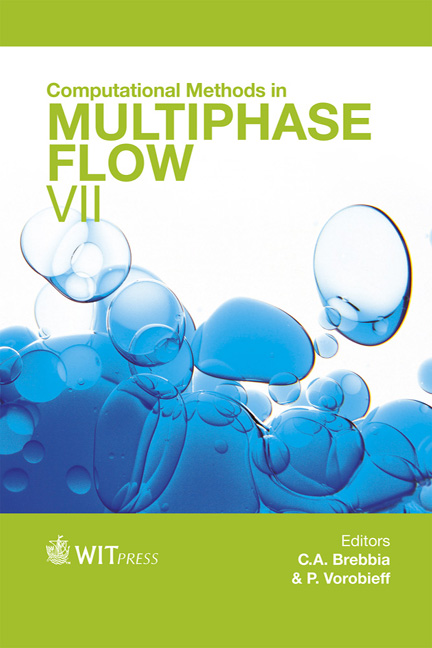Application Of The Gamma Radiation Method In Analysing The Effect Of Liquid Viscosity And Flow Variables On Slug Frequency In High Viscosity Oil-gas Horizontal Flow
Price
Free (open access)
Transaction
Volume
79
Pages
15
Page Range
447 - 461
Published
2013
Size
2,160 kb
Paper DOI
10.2495/MPF130371
Copyright
WIT Press
Author(s)
C. N. Okezue
Abstract
Published experimental observations of high viscosity liquid-gas horizontal flows have indicated that hydrodynamic slug flow is the commonest flow regime encountered over a wide range of flow conditions. Since hydrodynamic slugging generates high pressure fluctuations capable of damaging production pipelines, it is necessary to understand the complex characteristics of high viscosity slug flow regime through the analysis of one of its key parameters namely, slug frequency. Investigating slug parameters is crucial, especially when existing slug flow models used in the Petroleum Industry are not suitable for predicting the behaviour of high viscosity oil-gas flow. This is because most existing empirical correlations for predicting slug parameters are based on low viscosity liquid-gas flows which have different hydrodynamic features compared to high viscosity liquid-gas flows. In Cranfield University, an experimental investigation of high viscosity oil-air flow was performed to study the effect of liquid viscosity and flow variables on hydrodynamic slug flow. Experiments were conducted at liquid superficial velocities (Vso) and gas superficial velocities (Vsg) ranging from 0.06 m/s to 2.0 m/s and 0.0 m/s to 4.0 m/s respectively. For each experimental run, a singlebeam gamma densitometer was used to measure slug frequency. The effect of liquid viscosity (μ) on the measured slug frequency was investigated for the range of 1100 cP to 4000 cP. When compared against measured high viscosity slug frequency data, none of the existing empirical correlations used were able to produce accurate predictions. The predicted results tend to diverge from experimental data by several orders of magnitude. Given this context, a new
Keywords
gamma beam densitometer, two-phase flow, hydrodynamic slug flow regime, slug frequency, correlation, multiple-linear regression





